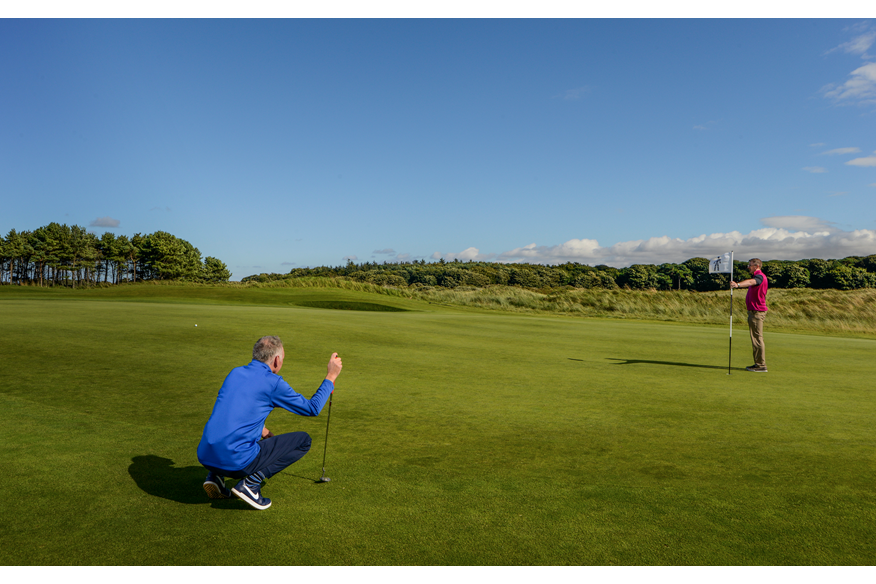A-Z Putting (L): Lost Art of Putting
Published:
Five key messages from the Lost Art of Putting
TG Top 50 teachers Gary Nicol and Karl Morris Gary and Karl have years of experience coaching everyone from beginners to Major winners. Karl’s company, The Mind Factor, works closely with TPEGS Ultimate Golf Experiences, run by Gary and Andrew Coltart at Archerfield Links.
Written by two TG Top 50 coaches, this 2018 book is the aspirin to the often headache-inducing world of technical putting tuition. Stripping putting back to its essentials, the book’s Putting Performance Principles remind us just how simple the activity is… and how a greater focus on elements like focused attention and visualisation can trump a technical approach.
“Most modern coaching and instruction focuses on what the golfer and their putter need to do, with very little mention of the golf ball,” says Gary. “Popular wisdom would have you believe the stroke creates the putt. We beg to differ. Our belief, and that of thousands of our readers and students, is that the putt creates the stroke. In pretty much every endeavour, the task creates the technique. So why should putting be any different?”
Here are five of the book’s key messages:
1. Place Your Attention on Strike
Hitting the ball out of the sweetspot is vitally important if you are to have any chance of hitting your putts the correct distance.
We know that if we hit our driver out the heel or toe, the resultant shots rarely travel the full or desired distance or direction. The same applies to an off-centre strike with your putter. We all know we should strike the ball out of the sweetspot… but when was the last time you actually paid any ATTENTION to doing just that?
Striking a putt solidly is not beyond most golfers, but when we become consumed by technique it can easily become overlooked. So next time out, try a simple shift in focus to the quality of your strike on every putt you hit. We are confident you will leave fewer putts short or low.
2. Read Putts From The Side
Most golfers only read their putts from down-the-line. This tends to foreshorten the perceived distance. The chances are your eyes won’t actually make contact with the ground until 18 to 24 inches beyond the ball. This confuses your brain and it starts to compute the required distance, MINUS that 18 to 24 inches.
When you think about it logically, it makes perfect sense that the resultant putt will probably come up short. But when you look at the putt from the side – especially the low side – it is like looking at the same information but in 3D.
Stand far enough back and you can see both your ball and the hole in your peripheral vision. You will see the full length of the putt. You get the whole picture.
3. Develop Your Putting Story
So, what kind of putter are you? The stories you tell yourself will either be useful to you or useless. This is because the stories we tell ourselves can begin to act out, even at a subconscious level. Great putters tend to adopt a good attitude to putting. Your story will determine or at the very least, heavily influence your attitude.
Consider how much the story you have carried around with you for so long might have held back your progress. Do you want to keep with the same old story, or could it perhaps be the time to take charge of a new script? Unless you change your story – the narrative you continually tell yourself – then no matter how many times you change your putter or no matter how much work you do on your putting stroke, you will never see any lasting change.
4. Ask Yourself Good Questions
By asking good questions and paying more attention to what the ball needs to do, the shackles that bind and restrict the majority of golfers in their pursuit of ‘the perfect stroke’ are removed, freeing up body and mind to release the creativity and artistry required to hole more putts.
Here are two you must ask: “Is it possible that I could hole this putt?” The answer of course is yes. Unless you choose otherwise. The very fact you believe it is possible now has your mind open to that possibility.
As you look at the putt, ask yourself: “What does this ball need to do to go in the hole?” Your mind will go in search of the answer. It will start to create a line; it will sense a pace. It will come up with an answer. Will the answer always be the correct one? Perhaps, perhaps not. But the more you ask this question, the more the habit develops and the more you will find your powerful supercomputer between your ears will start to come up with some good answers.
5. Harness Your Focus As Your Approach The Green
On your next round, give yourself a new and unusual task. Monitor your thoughts between playing your approach to the green, and reaching it. This seemingly innocuous period of time can have a profound effect on what happens once you reach your ball. For many club golfers, this period is one in which your mind drifts back to the past (‘I should have hit my approach differently, or better’) or forward to the future (‘If I can’t two-putt from there that’s another shot gone’).
With this type of thinking, the walk on to the green can set you up to feel anxiety and dread. But consider that the walk from your approach shot to the green is an opportunity. It is an opportunity to receive the information the green is trying to give you… to create the mental conditions that allow you to hole a putt. Above all, it is an opportunity to place your attention somewhere you personally find to be really useful.

